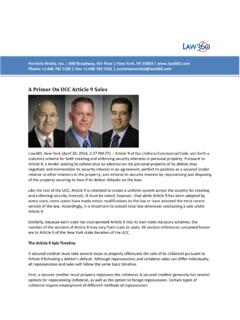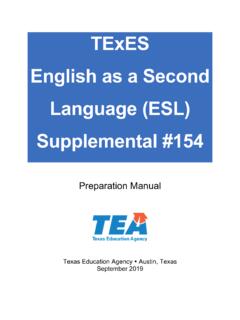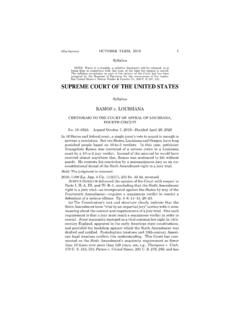Transcription of UCC Article 9 Secured Party Sales - Hodgson Russ
1 2017 Thomson Reuters. All rights the Resource ID numbers in blue on Westlaw for more. UCC Article 9 Secured Party Sales GARRY M. GRABER AND STEVEN W. WELLS, Hodgson RUSS LLP, WITH PRACTICAL LAW BANKRUPTCYR esource ID: w-008-7326A Practice Note discussing a Secured creditor s rights under UCC Article 9 to enforce its security interest by foreclosing on collateral. This Note addresses the basic timeline, process, and requirements for conducting an Article 9 9 of the Uniform Commercial Code (UCC) provides a comprehensive statutory scheme for the regulation of creating, perfecting, and enforcing security interests in personal property and fixtures (see Practice Note, UCC Creation, Perfection, and Priority of Security Interests (6-381-0551). Under Article 9, a lender seeking to secure its debt with the personal property of a debtor may: Negotiate and memorialize its security interest in an agreement. Perfect its position as a Secured lender relative to other interests in the property.)
2 Enforce its security interest by repossessing and disposing of the property securing its loan if the debtor defaults on the Practice Note provides an understanding of a Secured creditor s right under UCC Article 9 to enforce its security interest by foreclosing on its collateral after a debtor defaults ( Article 9 Sale). It addresses the basic timeline, process, and requirements for conducting an Article 9 Sale through the following four key steps: Repossession of collateral. Notice of the sale. Sale of collateral in a commercially reasonable manner. Disposition of sale with the general purpose of the UCC, Article 9 is intended to create a uniform system across the country for creating, perfecting, and enforcing security interests in personal property. Although Article 9 has been adopted by every state, some states have made modifications to the law or have not adopted the most recent version of the law. Counsel must therefore consult local law whenever conducting an Article 9 Sale.
3 All section references contained in this Note refer to Article 9 of the New York State iteration of the 9 SALESA rticle 9 sets out a framework that permits a Secured creditor to repossess and dispose of its collateral efficiently and inexpensively while providing the debtor with various procedural protections. The trigger for the sale is the debtor s default on its obligations to the lender under the applicable loan documents. Once the Secured creditor takes the required action for establishing a default under its loan documents with the debtor, it may proceed to: Repossess and dispose of the assets that comprise its collateral. Apply the net proceeds of any sale to the outstanding indebtedness owed to the lender. Determining whether an Article 9 Sale is a Secured creditor s best option depends on specific practical considerations that it must evaluate in each situation (see Advantages and Disadvantages of Conducting Article 9 Sales ). Article 9 SALE TIMELINEF ollowing a debtor s default, a Secured creditor must take several steps to properly effectuate the sale of its collateral under Article 9.
4 Although repossessions and collateral Sales can differ based on the facts and circumstances, all repossessions and Sales follow the same basic timeline. A Secured creditor must: First properly repossess the collateral. A Secured creditor generally has several options for repossessing collateral, including the option to forego repossession. Certain types of collateral require the creditor to employ specific methods of repossession (see Repossession). Then give reasonable notice to the debtor and other parties with interests in the collateral of its intent to sell the collateral. What constitutes reasonable notice varies depending on the type of collateral and the circumstances surrounding the sale of the collateral. However, a Secured creditor is generally deemed to have given reasonable notice if the Secured creditor provides at least ten days notice of the sale to the debtor and other interested parties (see Notice of Sale). Next use reasonable efforts to maximize the proceeds of the collateral sale.
5 The sale of collateral by a Secured creditor must be commercially reasonable . Article 9 does not specifically define this term, but a Secured creditor can typically protect itself 2017 Thomson Reuters. All rights reserved. 2 UCC Article 9 Secured Party Salesby seeking to sell its collateral on the most recognized market for the collateral, in the manner that the collateral is normally sold, and taking steps to maximize the profit on the sale. The disposition may be handled through a private or public sale (UCC 9-610(b)). The lender has the right at a public sale to purchase the collateral (UCC 9-610(c)(1)), while at a private sale the lender only has the right to purchase certain kinds of collateral, such as publicly traded securities (UCC 9-610(c)(2); see Commercial Reasonableness). Then properly apply the proceeds of the sale of the collateral. Creditors must first apply sale proceeds to any costs and legal fees associated with repossessing, holding, preparing, processing, and selling the collateral and then apply the proceeds of the sale to the Secured obligation.
6 The creditor next must distribute the proceeds to junior interests in the collateral and return any excess sale proceeds to the debtor (see Disposition of Proceeds).REPOSSESSIONA rticle 9 provides a Secured creditor with the advantage of taking possession of collateral immediately on a debtor s default. While the security agreement between the Secured creditor and the debtor must specify certain remedies permitted by Article 9, a Secured creditor has the right to repossess collateral unless the parties have expressly agreed otherwise (UCC 9-609).A Secured creditor may repossess collateral under Article 9 by: Exercising its right to self-help repossession (see Self-Help Repossession). Requiring the debtor to assemble and deliver the collateral (see Right to Make Debtor Assemble Collateral). Resorting to a traditional judicial foreclosure (see Judicial Foreclosure).A Secured creditor must also be aware that specific categories of collateral require certain actions for repossession, such as REPOSSESSIONThe two categories of collateral that may be subject to repossession through self-help are: Inventory and equipment (see Inventory and Equipment).
7 Accounts (see Accounts).Inventory and EquipmentA Secured creditor may repossess a piece of inventory or equipment or render a piece of equipment unusable on the debtor s premises by exercising self-help without judicial process (UCC 9-609(b)(2)). Self-help repossession is the easiest, quickest, and most cost-effective means of repossessing inventory and equipment because it does not require the time and expense of obtaining a court , self-help repossession typically poses risks because the creditor must ensure that it does not breach the peace when taking action. If the creditor or its agent causes a breach of the peace or wrongly repossesses the collateral, the creditor may be liable for conversion damages and possibly punitive damages (see Repossession Advantages and Disadvantages).The term breach of the peace is not defined in the UCC or another statute. The prohibition also cannot be waived by agreement between the parties nor may the parties determine by agreement what constitutes a breach of the peace.
8 The prohibition therefore has been the subject of significant litigation, and case law is the only guidance for Secured creditors. Courts generally define breach of the peace broadly to mean a disturbance of public order by an act of violence, or by any act likely to produce violence, or which by causing consternation and alarm, disturbs the peace and quiet of the community (People v. Most, 171 423 (1902)). For example, repossessions occurring over a debtor s oral protests have been found to be a breach of the peace. Secured creditors must consider discontinuing a self-help repossession attempt when faced with even a small amount of resistance from a debtor or third that courts have found typically breach the peace in a self-help repossession include: A uniformed police officer accompanying the Secured creditor without a court order. Failing to adhere to representatives of the debtor when being told to stop. Involving a nearby police officer.
9 Cutting a chain securing a gate and leaving the debtor s other property unprotected. Breaking a window. Breaking into a closed means of repossession that do not breach the peace include: Tricking the debtor. Entering onto property that is not locked. Taking a vehicle from an open Secured creditor may also exercise self-help by disabling a piece of equipment and then disposing of the equipment through a sale while the equipment remains on the debtor s premises. Disabling the equipment may help preserve the value of the self-help remedy is only available to Secured creditors that have a security interest in the actual piece of equipment. For example, while a Secured creditor may disable and dispose of a forklift used in warehouse operations on the debtor s property, it cannot do the same with a forklift that is held for resale in a business engaged in equipment Sales because that forklift may be deemed 9-607 of the UCC provides that when a defaulting debtor has pledged its accounts as collateral, the Secured creditor has the right to collect payment directly from those accounts.
10 A Secured creditor that knows the identity of the debtor s account debtors (which typically comprise the debtor s customers but generally refers to any 3 2017 Thomson Reuters. All rights Article 9 Secured Party Salesperson or entity that owes the debtor money) may provide written authenticated direction to the account debtor to pay the Secured creditor directly. Once a Secured creditor has provided that notice, the Secured creditor must be repaid by the account debtor. An account debtor that does not repay the Secured creditor directly remains liable for its debt to the Secured creditor, even if the account debtor repays the debtor (UCC 9-406(a)).An account debtor may request proof of assignment of its account by the debtor to the Secured creditor (UCC 9-406(c)). The proof of assignment must only be reasonable and may consist of a copy of the security agreement signed by the accounts are easily convertible to cash and their collection cannot result in a breach of the peace, a Secured creditor faces certain risks when sending out notices to account debtors because account debtors: Often do not feel obligated to repay the Secured creditor.









